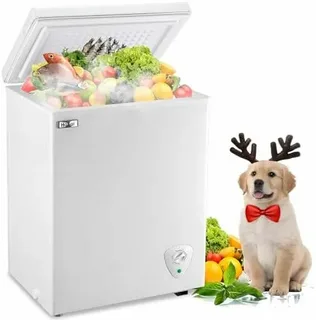Choosing a small freezer can be a game-changer for your kitchen, garage, or even office space. Whether you need extra storage for bulk groceries, meal prep, or specialty foods, finding the right freezer that fits your lifestyle is essential. This guide will help you understand the key factors to consider how to choose the right small freezer for your needs.
Assess Your Storage Needs
Before diving into specific models, it’s important to evaluate your storage requirements. Ask yourself:
- How much extra frozen food do I typically store?
- Will the freezer be used for long-term storage or frequent access?
- Do I need a freezer for meat, vegetables, or pre-cooked meals?
Knowing the volume and type of food will help you decide on the capacity and style of freezer you need. For instance, a 3.5 cubic feet chest freezer might be ideal for occasional bulk storage, whereas an upright model could be better for quick access and organization.
Understand Different Types of Small Freezers
There are two main types of small freezers to consider:
Chest Freezers
Chest freezers are known for their energy efficiency and larger storage space per cubic foot. They keep food cold for longer during power outages and are perfect for long-term frozen storage. However, they can be harder to organize and access because you have to dig through layers.
Upright Freezers
Upright freezers offer easier access with shelves and compartments. They tend to take up less floor space but might be slightly less energy-efficient than chest models. Uprights are a good choice if you frequently rotate items or want better visibility.
Energy Efficiency and Features
When learning how to choose the right small freezer for your needs, energy consumption is a crucial factor. Look for models with Energy Star certification, which guarantees better efficiency and lower electricity bills.
Additional features to consider include:
- Adjustable temperature controls
- Defrost options (manual vs. frost-free)
- Locking lids or doors for security
- Interior lighting for convenience
- Portable wheels for easy movement
Size and Space Considerations
Measure the available space where you plan to place the freezer. Remember to leave extra room for ventilation and easy door opening. A freezer that fits perfectly into your space will be easier to use and maintain.
Also, consider the freezer’s noise level if it will be placed indoors or near living spaces.
Budget and Warranty
Small freezers come in a range of prices. Determine your budget early on but balance cost with features and reliability. Sometimes, investing a bit more upfront saves you money in the long run through energy savings and durability.
Check the warranty terms as well; a good warranty can provide peace of mind for potential repairs or replacements.
Final Thoughts: How to Choose the Right Small Freezer for Your Needs
In conclusion, how to choose the right small freezer for your needs involves evaluating storage requirements, understanding freezer types, checking energy efficiency, and considering space and budget constraints. Taking the time to assess these factors will ensure you pick a freezer that fits your lifestyle and keeps your food perfectly preserved.

